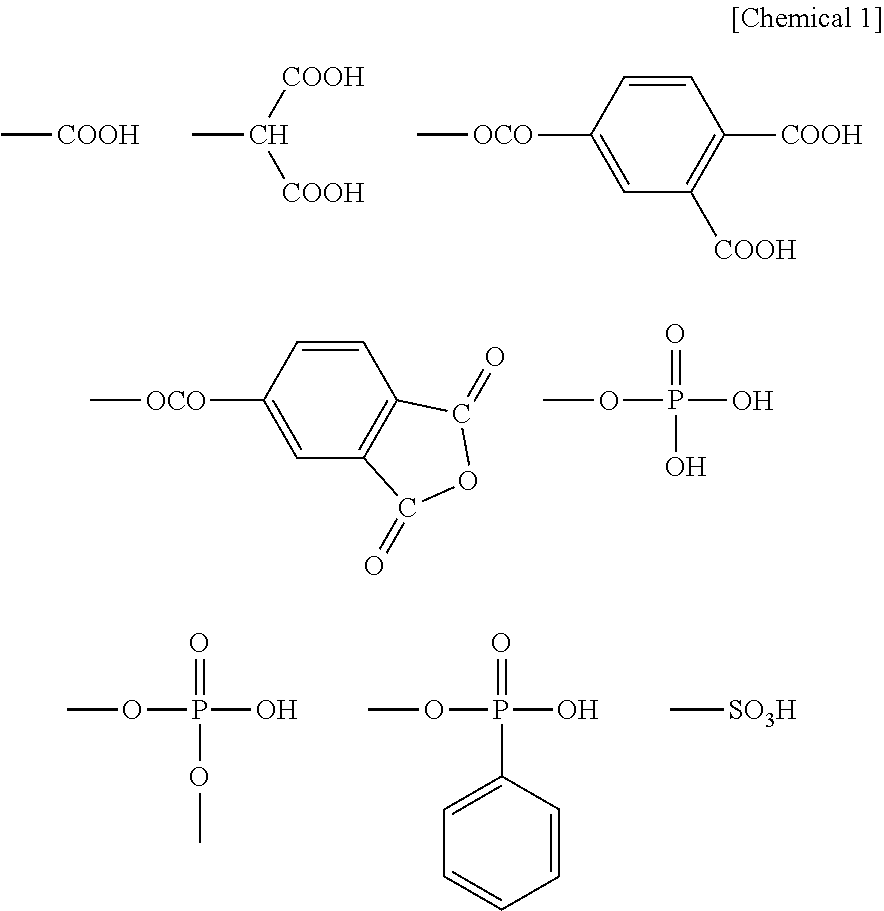Primer composition for metal oxide ceramics
a technology of metal oxide ceramics and compositions, applied in the field of primer compositions, can solve the problems of insufficient durability of adhesion, decreased adhesion property, and inability to maintain a sufficiently large adhesion property for extended periods of time in a sever environment in an oral cavity, etc., to achieve excellent adhesion durability, improve adhesion force, and large strength
- Summary
- Abstract
- Description
- Claims
- Application Information
AI Technical Summary
Benefits of technology
Problems solved by technology
Method used
Image
Examples
example 1
[0141](A1) An acidic group-containing polymerizable monomer: 1.0 g of SPM, 4.5 g of MAC-10;[0142](A2) A polymerizable monomer without acidic group: 4.5 g of UDMA;[0143](B) A source of polyvalent metal ions: 0.03 g of Ti(O-nBu)4; and[0144](C) An organic solvent: 23 g of ethanol (EtOH);
were stirred and mixed together to prepare a primer composition of the present invention (one-package type). The primer composition was measured for its concentration of polyvalent metal ions and strength of adhesion to the prosthetics of metal oxide ceramics. The results were as shown in Table 1.
examples 2 to 20
[0145]Primer compositions were prepared in the same manner as in Example 1 but changing the recipe into components shown in Table 1, and were evaluated in the same manner to obtain results as shown in Table 1.
examples 21 to 41
[0146]Primer compositions were prepared in the same manner as in Example 1 but changing the recipe into components shown in Table 2, and were evaluated in the same manner to obtain results as shown in Table 2.
PUM
| Property | Measurement | Unit |
|---|---|---|
| boiling point | aaaaa | aaaaa |
| boiling point | aaaaa | aaaaa |
| vapor pressure | aaaaa | aaaaa |
Abstract
Description
Claims
Application Information
 Login to View More
Login to View More - R&D
- Intellectual Property
- Life Sciences
- Materials
- Tech Scout
- Unparalleled Data Quality
- Higher Quality Content
- 60% Fewer Hallucinations
Browse by: Latest US Patents, China's latest patents, Technical Efficacy Thesaurus, Application Domain, Technology Topic, Popular Technical Reports.
© 2025 PatSnap. All rights reserved.Legal|Privacy policy|Modern Slavery Act Transparency Statement|Sitemap|About US| Contact US: help@patsnap.com



